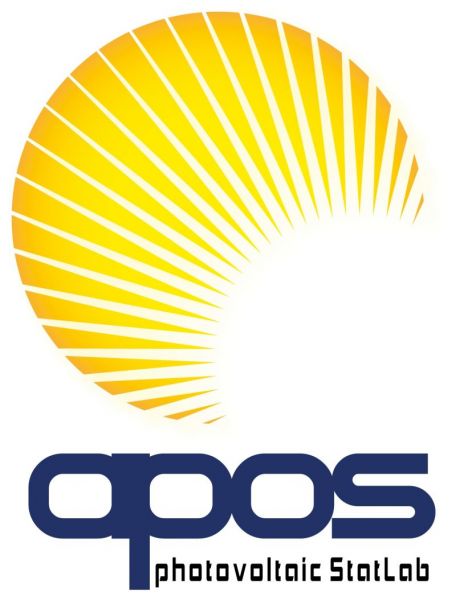Welcome to the Photovoltaic Statistical Laboratory
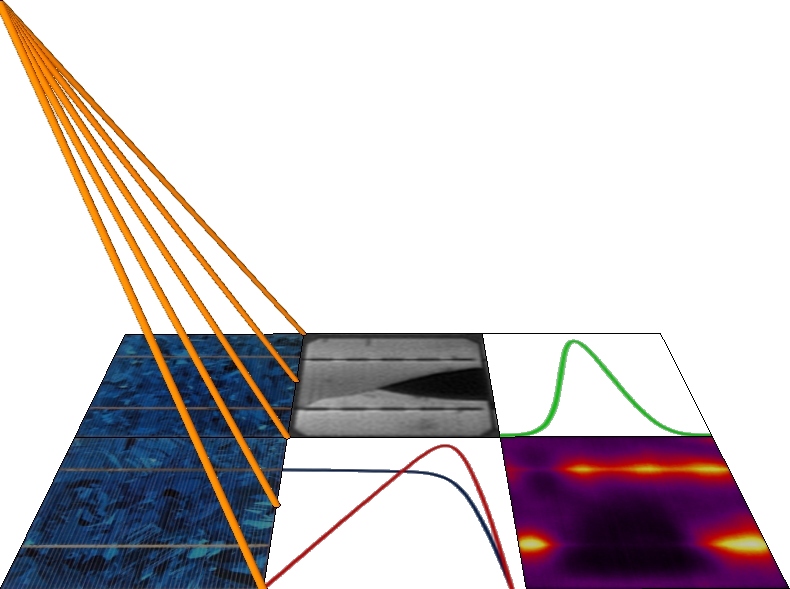 The Photovoltaic Statistical Laboratory conducts research on stochastics in photovoltaics, especially by developing new methods for statistical inference and analysis in photovoltaics. Current research focuses on problems arising in photovoltaic quality control and the evaluation of PV systems. We develop tailor-made sampling and inspection plans, monitoring procedures for photovoltaic systems and methods to analyse related data including high-dimensional data.
The Photovoltaic Statistical Laboratory conducts research on stochastics in photovoltaics, especially by developing new methods for statistical inference and analysis in photovoltaics. Current research focuses on problems arising in photovoltaic quality control and the evaluation of PV systems. We develop tailor-made sampling and inspection plans, monitoring procedures for photovoltaic systems and methods to analyse related data including high-dimensional data.
The lab brings together a unique mix of internationally recognised expertise in statistics, including quality control as well as a number of applied areas including optimal experimental design, time series analysis and change-point detection.
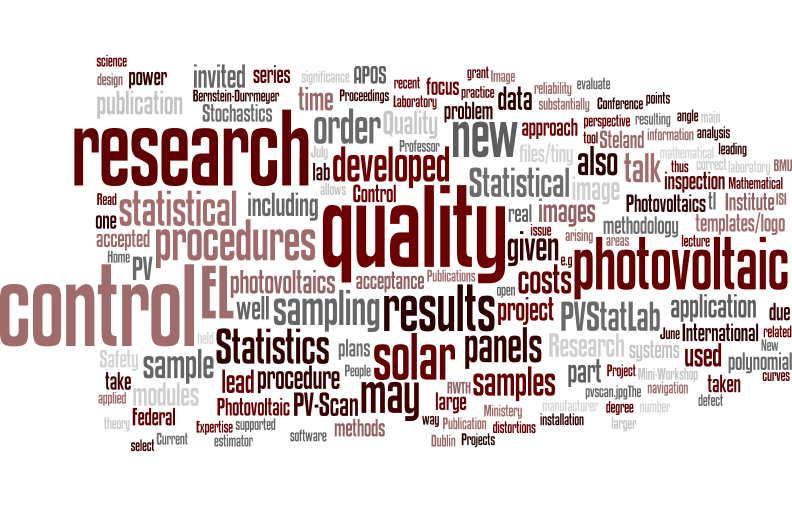
October 2022
Book on Artificial Intelligence, Big Data and Data Science in Statistics
Challenges and Solutions in Environmetrics, Natural Sciences and Technology
This new book, edited by Ansgar Steland and Kwok-Leung Tsui (VTech, USA), contains two papers about photovoltaics resulting from joint research with Forschungszentrum Jülich, IEK5. Springer book.
September 2022
Mini Workshop: Stochastics, Machine Learning and Applications
September, 8th, Institute of Statistics, RWTH Aachen
Room: Library of ISW, Time: 14:00
This one-day workshop with three invited talks and discussions deals with the interplay of stochastics, machine learning and applications. Markus Lange-Hegermann held the main talk on inductive biases for Gaussian processes. Fabian Mies gave a talk about change-point inference for certain discretely sampled models. Evgenii Sovetkin from Forschungszentrum Jülich, IEK5, presented new work about irradiance/yield modeling for vehicle-integrated photovoltaics.
March 2021
Paper on automatic segmentation of EL images
In joint work with the Pattern Recognition Lab of FAU University of Erlangen-Nürnberg our approach to preprocess EL images (see below) was compared with a somewhat related but different approach developed there. Whereas we decided to learn radial lens distortion from checkerboard pictures, the method developed at FAU (with partners from TH Nürnberg and Helmholtz Institute Erlangen-Nürnberg) uses online calibration for each image. Both algorithm were compared using 44 modules with 2,624 cells from which 715 are defective. The results show that the FAU method is slightly superior for polycrystalline cells, our method tends to be somewhat better for monocrystalline cells and is also more robust. Overall, the results are highly interesting. The paper has been accepted by Machine Vision and Applications. For details see here.
December 2020
Extreme Learning Machines for On-Board ML in (Electric) Cars to Analyze PV Data
May 2020
Paper on Machine Learning for Mobile Photovoltaics:
Cars, especially those equipped with PV modules, collect and process large amounts of data from attached sensors for tasks such as autonomous driving or optimization of the usage of the attached modules to maximize the car's range. The data is used for on-board learning of relationships between variables, preferably based on the car's computational ressources, which requires valid learning methods with low computational costs. Analogously, wearable photovoltaics could be optimized by appropriate learning systems running on the pedestrian's smartphone. The problem is complicated by the fact that such an object moves through an inhomogenous environmental landscape with many fixed sites which may interact with the object or disturb resp. influence its data sampling depending on its closenes to such a site. This may result in a highly non-stationary dependent random field the object is sampling from, and, as a consequence, the training data may be highly non-stationary with varying depedencies.
Supervised machine learning methods based on extreme (deep) learning machines (ELM) and regression are appropriate learning methods. Extreme learning machines guarantee super fast learning and rank among the best methods in large-scale comparison studies. They implement single hidden layer artificial neural networks as well as deep learners.
We studied the theoretical properties, especially in terms of consistency, bounds for the sample squared prediction error and asymptotic distribution theory, of these machine learning methods for a complex nonlinear and non-stationary spatial-temporal stochastic model for the sampling process. It allows for fixed sites (factors) of randomness which influence the moving object's data collection, realized by an underlying nonlinear factor model.
The preprint can be found on arxiv.
July 2019
Paper on Detection of Defects in EL Images
Our work on the detection of defects in EL images of PV modules and solar cells has been published in Integrated Computer-Aided Engineering. The paper describes the methods and algorithms in detail, provides simulation and reports the application to data collected in the PV Scan research project.
The preprint version can be found on arxiv.
February 2018
PV-Scan: Project Results
The main results from the collaborative research project PV-Scan were summarized in a joint paper which is published in PV-Tech Power (Volume 14). The main goal of this long-term study was to analyze and carefully evaluate selected photovoltaic systems, in order to assist the assessment of technical defects and faults as well as their bankability and risk assessment. The failure assessments based on data collected during the course of the project from 5 PV systems and additional data showed the importance of elective quality assurance.
Severy quality problems like "whitening" or "yellowing" of backsheets - an issue concerning the overall gigawatt range - and potential-induced degradation (PID) were studied and evaluated. A problem detected during the project was the unexpected amount of thermally damaged or destroyed interconnectors: Inspection of IR images revealted that up to 6% of the installed modules were affected by overheating junction boxes.
The evaluation of PV systems based on performance measurements and/or EL imaging requires to draw a sample from the system. The PV-StatLab team developed a novel cluster-sampling approach to minimize the costs of sampling. To monitor performance data collected by data loggers, specific monitoring schemes based on string-data were developed, examined and applied.
A further major contribution of the PV-StatLab team was the development of methods for automatized analysis of EL images of photovoltaic modules, see below.
For further information see here.
July 2017
Automatic Detection of Suspicious Areas in EL Images
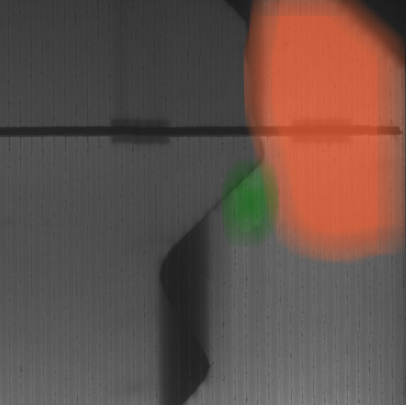
cell area got worse, whereas the green one has improved in terms of radiative recombination.
November 2016
November 2015
February 2015
Preprocessing EL Image Field Data
In order to reduce the costs of quality control in photovoltaics, one may take EL images of PV modules in the field. But then distortions such as radial or perspective distortion are much stronger as for EL images taken in a laboratory. We have developed sound and fast preprocessing methods, tailor-made for solar panels, which correct those distortions. For instance, in order to correct the perspective distortion, one has to determine the right angle in order to rotate the image appropriately. The automatic calculation of such an angle is, however, sensitive with respect to outliers , e.g. due to additional background objects. PVStatLab has developed a robust statistical approach to deal with that problem which has been succesfully validated based on a large database of real EL images. The results are accepted for publication in the Proceedings of the 3rd International Conference on Mathematical, Computational and Statistical Sciences and will be also part of plenary lecture of Prof. Steland given there.
January 2015
Detecting Changes in Inhomogeneous EL Image Data
Electroluminescence (EL) imaging has become a state-of-the-art technique to evaluate the physical state and quality of solar panels. We developed a new methodology in order to detect local changes, e.g. due to a damage, from a reference EL image in a sequence of EL images. The method allows to contrast a given focus region, where a defect may occur, with its neighborhood, thus allowing to take into account inhomogeneities as arising in multicrystalline solar cells. The theoretical results are accepted for publication in the volume Stochastic Models, Statistics and Their Applications that appears in the series Springer Proceedings in Mathematics and Statistics. The results will also be part of an invited talk given by PVStatLab researcher Annabel Prause.
The theory developed therein allows to design the procedure like a statistical significance test, such that signals indicating a defect come with a p-value resp. a significance level. That research has been partly conducted within the PV-Scan collaborative project. In addition, a more comprehensive methodology has been the subject of a recent Ph.D. thesis. Future planned work will focus on investigating, evaluating and comparing those approaches for real EL image data in order to propose a reliable procedure for practice.
July 2014
PV-Scan is Energiewende-Project
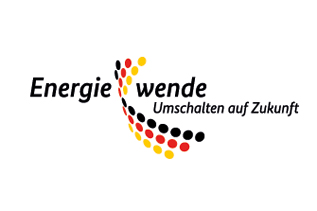 The PV-Scan project has been classfied as an Energiewende project and thus has been assigned to the Federal Ministry for Economic Affairs and Energy.
The PV-Scan project has been classfied as an Energiewende project and thus has been assigned to the Federal Ministry for Economic Affairs and Energy.
December 2013
Mini-Workshop on Stochastics in Photovoltaics
We are organizing a Mini-Workshop on Stochastics in Photovoltaics focusing on new acceptance sampling procedures, supported by the Society of Reliability, Safety and Quality and the PV-Scan Collaborative Research Project. The extension of acceptance sampling procedures to multi-period inspection-sampling plans belongs to the research goals of the lab. The main talk will be given by
Wolfgang Kössler (Humboldt University Berlin)
The mini-workshop will take place at the library of the Institute of Statistics and starts at 11:00. The main talk, being part of a series of invited lectures of the Institute of Statistics, will be held in lecture hall FO6 at 15:00. Read more.
August 2013
BMU Funded Colloborative Research Project Starts
 The Federal Ministery for the Environment, Nature Conservation and Nuclear Safety (BMU) has awarded a research grant to a large consortium including PVStatLab@RWTH (ISW, Chair of Stochastics), a research institute and industrial partners. More information will be provided soon. Read more (press statement).
The Federal Ministery for the Environment, Nature Conservation and Nuclear Safety (BMU) has awarded a research grant to a large consortium including PVStatLab@RWTH (ISW, Chair of Stochastics), a research institute and industrial partners. More information will be provided soon. Read more (press statement).
New Control-Inspection Sampling Scheme to Lower Costs
July 2013
Research Publication: Photovoltaic Problems lead to Solving an Open Mathematical Problem
September 2012
Research Publication
Results of our current research project will be published in Progress in Photovoltaics, a leading interdisciplinary high-impact journal (impact factor: 7.7). In that publication we describe a new theory to evaluate the reliability of solar panels by out-of-spec sampling plans and demonstrate its application in photovoltaic practice. Our new methodology may lead to substantially reduced sample sizes of control samples and therefore cuts the costs of photovoltaic quality assessments. The lab intends to implement the approach as a software tool to improve the reliability of solar panels.
June 2012
New Version of APOS released implementing our research results
APOS photovoltaic StatLab is used by leading photovoltaic research laboratories and manufacturers. By providing such a software tool we foster dissemination and application of our research findings and are in a position to realize a fast-track technology transfer. Our new procedures may lead to a reduction of up to 80% in terms of the costs associated to quality control.
June 2011
Invited Talk at ISI Conference, Dublin, UK
Professor Steland gave an invited talk at the 58th World Statistics Congress organized by the International Statistical Institute and held at Dublin, covering selected research results. Those biennial ISI conferences represent the largest international meetings in the statistical science and cover theoretical as well as applied topics.
Current research projects are devoted to quality control of solar panels. Partners include SolarWorld AG, AVANCIS GmbH & Co KG and TÜV Rheinland Group.
The laboratory is interested in promoting collaboration with researchers at other universities through visits and organisation of workshops.
